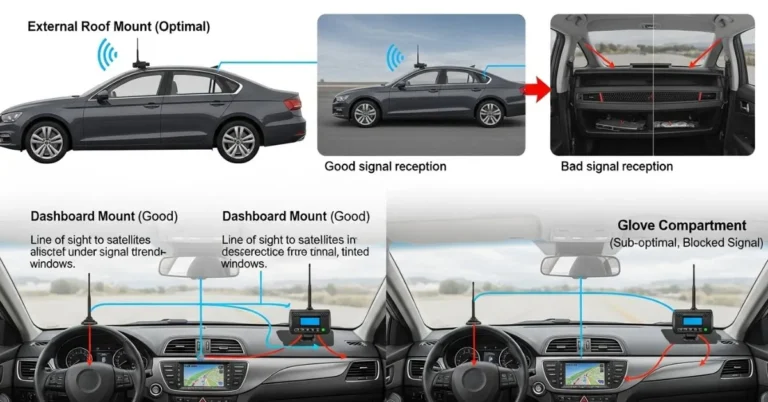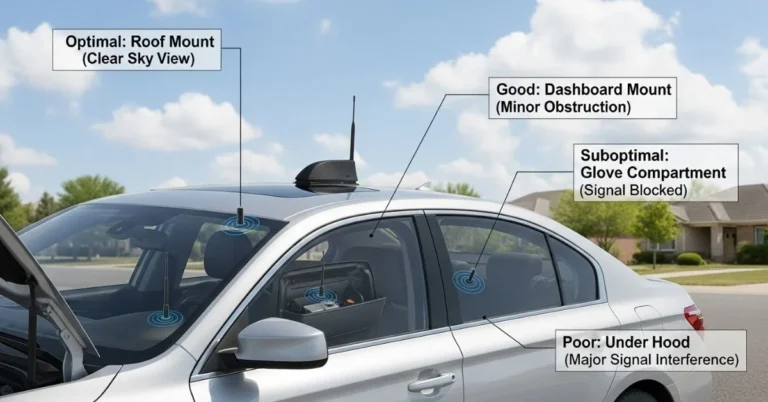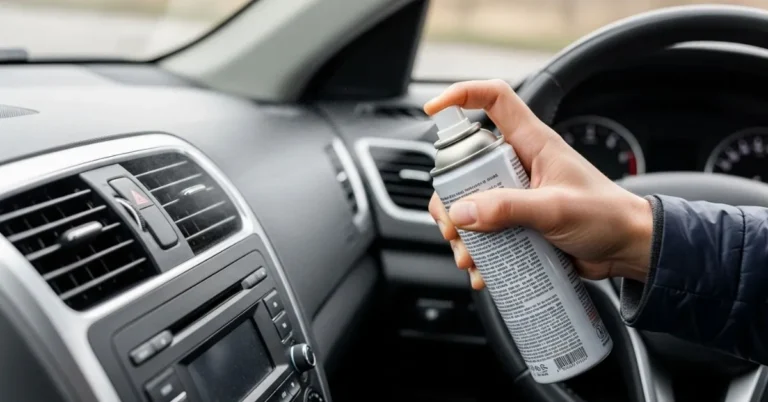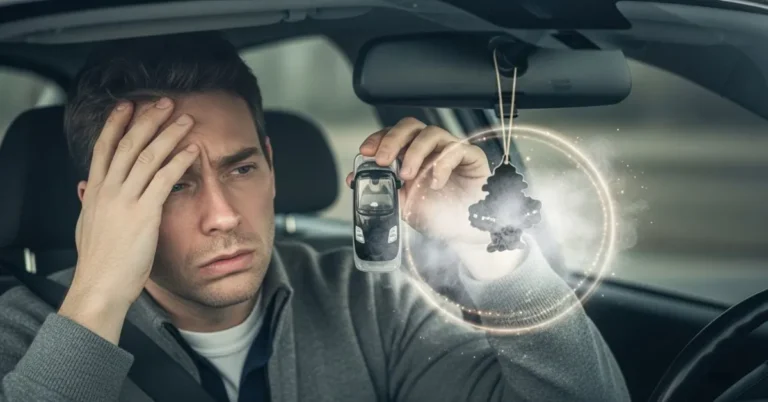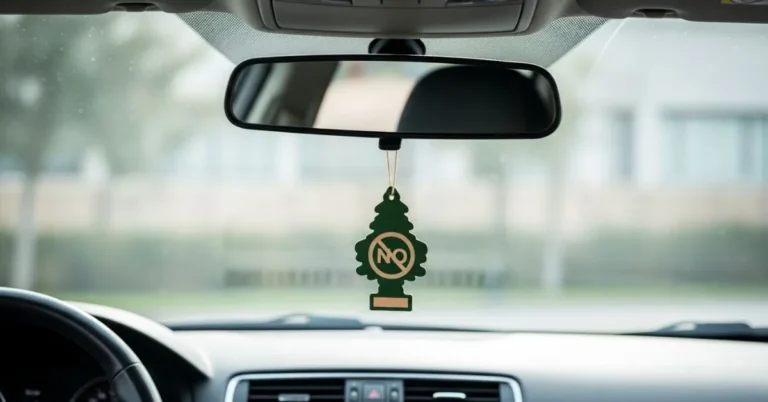It all began on a regular Tuesday afternoon. I had just left the grocery store when my phone buzzed with a message from an unfamiliar number: “Nice stop on Main Street.” Goosebumps. I hadn’t shared my location, yet someone knew where I had been. At first, I thought it was just a coincidence or a prank. But the eerie messages kept coming. While organizing the trunk a week later, I found a small black plastic box behind the spare tire. That day I learned how to find a GPS tracking device on your car, and that unsettling discovery changed everything.
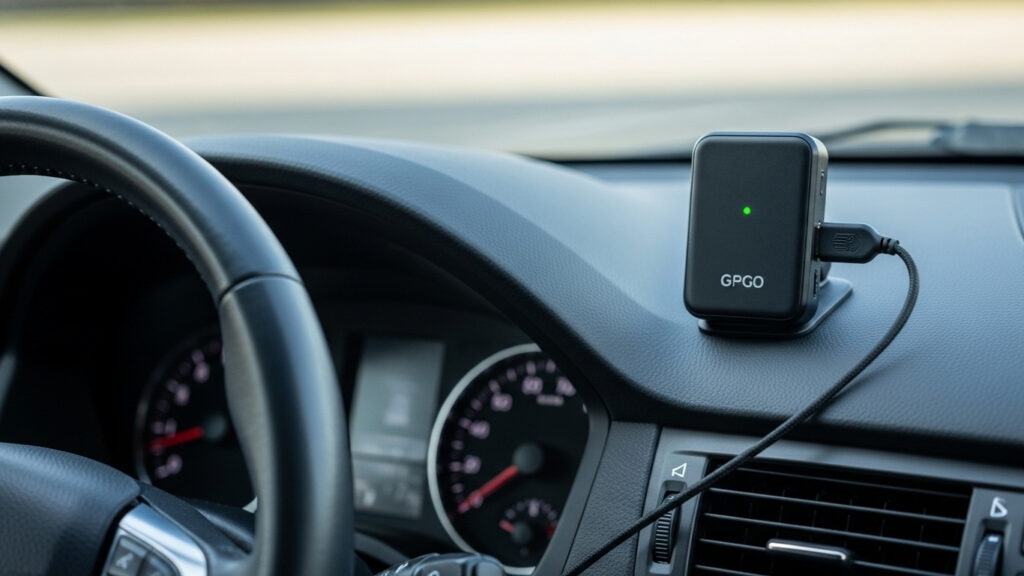
If you suspect your car may be secretly tracked, you’re not alone and not crazy. With surveillance tech getting cheaper and sneakier, staying one step ahead has become more critical. In this expert-backed guide, I’ll show you how to detect, locate, and deal with hidden GPS tracking devices using safe, legal, and affordable methods.
Contents
- 1 1. Why Someone Might Want to Track Your Vehicle
- 2 2. Know Your Enemy: Common GPS Tracking Devices
- 3 3. Inspect the Exterior: Start With a Physical Sweep
- 4 4. Don’t Forget the Inside: Interior Inspection Checklist
- 5 5. Level Up: Use a GPS Bug Detector
- 6 6. Check the OBD Port: A Common Tracker Location
- 7 7. Know Your Legal Rights
- 8 8. What Should You Do If You Find a GPS Tracker?
- 9 9. Prevent Future Tracking: Stay One Step Ahead
- 10 10. Affordable Tools That Can Save You (and Your Sanity)
- 11 Frequently Asked Questions: How to Find a GPS Tracking Device on Your Car
- 11.1 Q1. How do I know if someone put a GPS tracker on my car?
- 11.2 Q2. Where are GPS trackers usually hidden in a car?
- 11.3 Q3. Is it legal for someone to track my car without permission?
- 11.4 Q4. Can I remove a GPS tracking device if I find one?
- 11.5 Q5. What should I do after finding a GPS tracker on my car?
- 12 Expert Thoughts
- 13 About the Author
1. Why Someone Might Want to Track Your Vehicle
Knowing the motive behind the tracking can help you understand what type of device might be used and where it could be hidden. Here are the most common reasons:
- Personal Relationship Conflicts: Unfortunately, GPS trackers are increasingly used by controlling partners or ex-spouses.
- Vehicle Repossession or Lending Agencies: Some companies track leased or financed vehicles.
- Employer Surveillance: Delivery drivers, rideshare operators, or sales reps may be unknowingly monitored.
- Stalking or Harassment: A serious and illegal concern in many states.
- Theft Prevention: Ironically, some trackers are used for security but they can be installed without your knowledge.
Understanding the context helps you approach the situation with the right tools and urgency.
2. Know Your Enemy: Common GPS Tracking Devices
Not all trackers are created equal. Here’s a breakdown of the most commonly used types:
- OBD-II Plug Trackers: These devices plug into your car’s On-Board Diagnostics port. Insurance companies, fleet managers, or malicious individuals often use them because they’re easy to install and draw power from your vehicle.
- Magnetic Battery-Powered Trackers are compact and attach magnetically under or inside the vehicle. They’re wireless, self-powered, and typically used for stealth.
- Hardwired Trackers: Professionally installed into the vehicle’s wiring system. These are harder to find and require physical inspection by a mechanic or electronics expert.
- Bluetooth Trackers (like AirTags): Though not traditional GPS devices, Bluetooth trackers can monitor your location via nearby devices. Apple AirTags, for instance, have recently been flagged for misuse.
3. Inspect the Exterior: Start With a Physical Sweep
Your car’s exterior offers plenty of hiding spots for someone trying to stay incognito. Begin with these high-risk zones:
- Under Bumpers: Use a flashlight to check behind the front and rear bumpers.
- Wheel Wells: Gently reach behind the plastic liners and feel for unusual lumps or magnets.
- Under the Chassis: Crawl under (if safe) or use a mirror with a flashlight to inspect the car’s undercarriage.
- Exhaust Pipe Area: Carefully inspect but avoid contact if the vehicle was recently running.
- Spare Tire Compartment: Open the trunk and look inside the tire cavity and surrounding plastic panels.
A magnetic sweep tool can detect devices tucked in hard-to-reach areas by alerting you to any foreign metal object that clings unusually tightly.
4. Don’t Forget the Inside: Interior Inspection Checklist
If the external search turns up nothing, move inside. Hidden trackers can be placed anywhere you wouldn’t notice in daily use:
- Underneath the Seats: Use a flashlight and mirror to check the underside of each seat.
- Glove Compartment and Center Console: Look for devices attached with tape or Velcro.
- Dashboard or Vents: With tools or a mechanic’s help, inspect behind panels for hardwired units.
- Sun Visors and Overhead Compartments: Some devices are hidden in places you rarely touch.
- Floor Mats and Under Carpet: These areas can easily conceal flat devices.
Even a casual visual inspection can miss tiny trackers, so take your time and feel around corners.
Read More: How Do I Add a Device to Find My Phone? A Step-by-Step Guide
5. Level Up: Use a GPS Bug Detector
Manually checking every inch of your vehicle takes time and a keen eye. A GPS bug detector makes it much easier. These devices scan for radio frequencies (RF), cellular signals, and Wi-Fi or Bluetooth transmissions.
Recommended Types:
- Handheld RF Detectors: Compact, affordable, and beginner-friendly
- Multi-Mode Signal Detectors: These can detect hidden cameras and audio bugs as well
To use:
- Turn off your car and all nearby electronics
- Turn on the detector and sweep areas slowly
- Look or listen for any indicator beeps or flashing lights
Pro tip: Run the scan inside and outside the vehicle, especially near suspicious spots like the trunk or dashboard.
6. Check the OBD Port: A Common Tracker Location
Your car’s OBD-II port is like its data command center and easily accessible to anyone familiar with vehicles.
- It’s usually located beneath the steering column or near the driver’s knee panel.
- If something is plugged in and you didn’t install it (like a dongle or box), investigate.
- A Bluetooth OBD2 scanner can be used to detect any unauthorized devices transmitting data.
The device may log trip data, even if it does not send GPS signals.
7. Know Your Legal Rights
If you find a suspicious device, it’s vital to act within the bounds of the law:
- If You Own the Vehicle: You can remove and inspect any tracker.
- If You Lease or Rent: Contact the owner or rental agency first.
- Illegal Tracking: Most U.S. states have laws prohibiting non-consensual vehicle tracking.
- Involve Authorities: If you believe you’re being stalked, call the police and preserve the device as evidence.
Remember that tampering with a tracker on someone else’s vehicle even for good reason can be illegal.
8. What Should You Do If You Find a GPS Tracker?
Take a deep breath and proceed carefully:
- Document the Evidence: Take clear photos and video of the device’s hiding spot.
- Avoid Destroying It: You might need it for a legal case.
- Report It: File a police report if you suspect malicious intent.
- Consult a Lawyer: Especially in domestic or custody cases.
- Get a Professional Sweep: Some mechanics or private investigators offer thorough electronic diagnostics.
9. Prevent Future Tracking: Stay One Step Ahead
Once you’ve dealt with the current issue, focus on prevention:
- Install a Faraday Pouch: It blocks signals when you park or store the vehicle.
- Use Bug Jammers (where legal): Some devices scramble tracking signals.
- Get Regular Scans: Use a GPS detector monthly or after lending your car.
- Inspect Before Long Trips: Especially if you’re involved in disputes or suspect surveillance.
- Keep Your Car Locked: Many trackers are planted during a quick, unauthorized entry.
10. Affordable Tools That Can Save You (and Your Sanity)
You don’t need to spend a fortune to stay protected. Here are a few budget-friendly tools worth considering:
- RF GPS Detectors: $30–$70, rechargeable and portable
- Magnetic Undercarriage Mirrors: $15–$25, ideal for quick underside sweeps
- Bluetooth OBD2 Scanners: $20–$50. They help identify strange devices
- Faraday Key Bags & Signal Pouches: $10–$30, blocks unwanted GPS transmissions
These tools are helpful for immediate detection and can help you develop a long-term vehicle security routine.
Frequently Asked Questions: How to Find a GPS Tracking Device on Your Car
Q1. How do I know if someone put a GPS tracker on my car?
Watch for unusual battery drain, unfamiliar devices, or strange noises. The best way to confirm is by using an RF signal detector.
The top spots include under the bumpers, inside the trunk, near the OBD port, under the seats, and behind dashboard panels.
Q3. Is it legal for someone to track my car without permission?
In most U.S. states, it’s illegal unless the person tracking owns the vehicle or has consent.
Q4. Can I remove a GPS tracking device if I find one?
Yes, if you legally own the vehicle. Otherwise, document and report it before removing anything.
Q5. What should I do after finding a GPS tracker on my car?
Take pictures, consult local authorities, and consider getting professional help to ensure no additional devices remain.
Expert Thoughts
You shouldn’t worry about being followed in the 21st century, yet here we are. Now, you know how to find a GPS tracking device on your car, what to look for, and how to respond safely. Trust your gut, use affordable tech, and don’t be afraid to take back control of your privacy.
You deserve to drive with peace of mind not someone else riding shotgun in silence.

